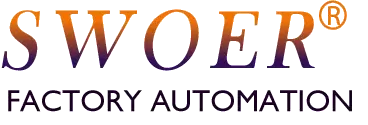1、 Comparison of Working Principles and Characteristics
Characteristic vibration feeder pusher/feeder
The working principle utilizes the electromagnetic drive and resonance principle to generate small vertical torsional vibrations in the disk body, and through inertia and friction, the parts move forward along the spiral track and complete orientation. It is usually a linear motion mechanism (cylinder, electric push rod) that pushes the disorderly stacked parts forward one by one through reciprocating push claws or push plates.
Core functions include sorting, orientation, transportation separation, counting, and transportation
Advantage 1. Complex orientation: It can arrange messy parts in a unified and specific direction through clever mechanisms on the track.
- Continuity: The feeding process is continuous with a large flow rate.
- Universality: Specially designed to accommodate a wide range of part shapes. 1. Part friendly: Soft to move, does not damage parts, especially suitable for surface scratches, electroplated parts, and flexible parts.
- No noise: runs very quietly, far below the vibration plate.
- Non winding: Perfectly solves the problems of winding, overlapping, and jamming of springs, slender parts, and sheet parts in the vibration feeder.
- Simple structure: usually low cost and easy to maintain.
Disadvantage 1. High noise: Vibration and collisions between parts and the feeder can produce significant noise.
- Possible damage: For precision machined surfaces, vibration friction may cause scratches.
- Afraid of entanglement: Springs, wires, etc. are prone to tangling into a “tangled mess” inside the feeder.
- Strong customization: A vibrating feeder is usually only suitable for one type or category of parts, and changing production requires replacing or modifying the entire feeder. 1. Cannot be oriented complexly: Usually, only the parts can be separated from the silo and pushed out. If the directions of the parts are not consistent, it cannot unify them. Usually, the parts need to be pre positioned in the silo.
- Intermittent feeding: The pushing and pulling action is intermittent, and the theoretical speed limit is usually lower than that of the vibrating feeder for continuous feeding.
- Dependency pre sorting: It is necessary to coordinate with a material bin or guide rail that has already arranged the parts roughly.
2、 How to choose? See your specific needs
It is strongly recommended to choose the case of [vibrating feeder]:
When complex orientation of parts is required: for example, you need all screws facing up, all gasket holes facing left, and a complex injection molded part needs to identify the front and back sides. This is the core advantage of the vibrating feeder, which cannot be achieved by the push plate.
The feeding speed requirement is extremely high, and when the parts are suitable for vibration: for small standard parts (such as screws and nuts), the vibrating feeder can achieve a conveying capacity of hundreds or even thousands per minute.
When space is limited and a circular layout is required: the vibrating feeder can hover around the host for feeding, making the layout more compact.
Strongly recommend choosing the ‘Push Board’ option:
When parts are prone to entanglement and overlap, springs are the most typical example. Using a vibrating feeder to send springs is almost a disaster, while a push plate is the perfect solution. Other items such as jewelry chains, wires, sealing rings, and sheet parts are also applicable.
When the surface requirements of parts are extremely high and there should be no scratches, such as electroplated high-end hardware, mirror polished parts, acrylic products, etc. The gentle pushing method of the push board can protect the surface of the product.
When the work environment is sensitive to noise, such as in laboratories near offices or quiet medical equipment workshops.
When the direction of the parts themselves is already consistent or does not need to be oriented: If your parts have already been unified in direction through other means (such as manual placement or packaging tape) when they are received, then the push plate is just an efficient “counter” and “pusher”.
When the budget is limited and the push board function can meet the requirements.
